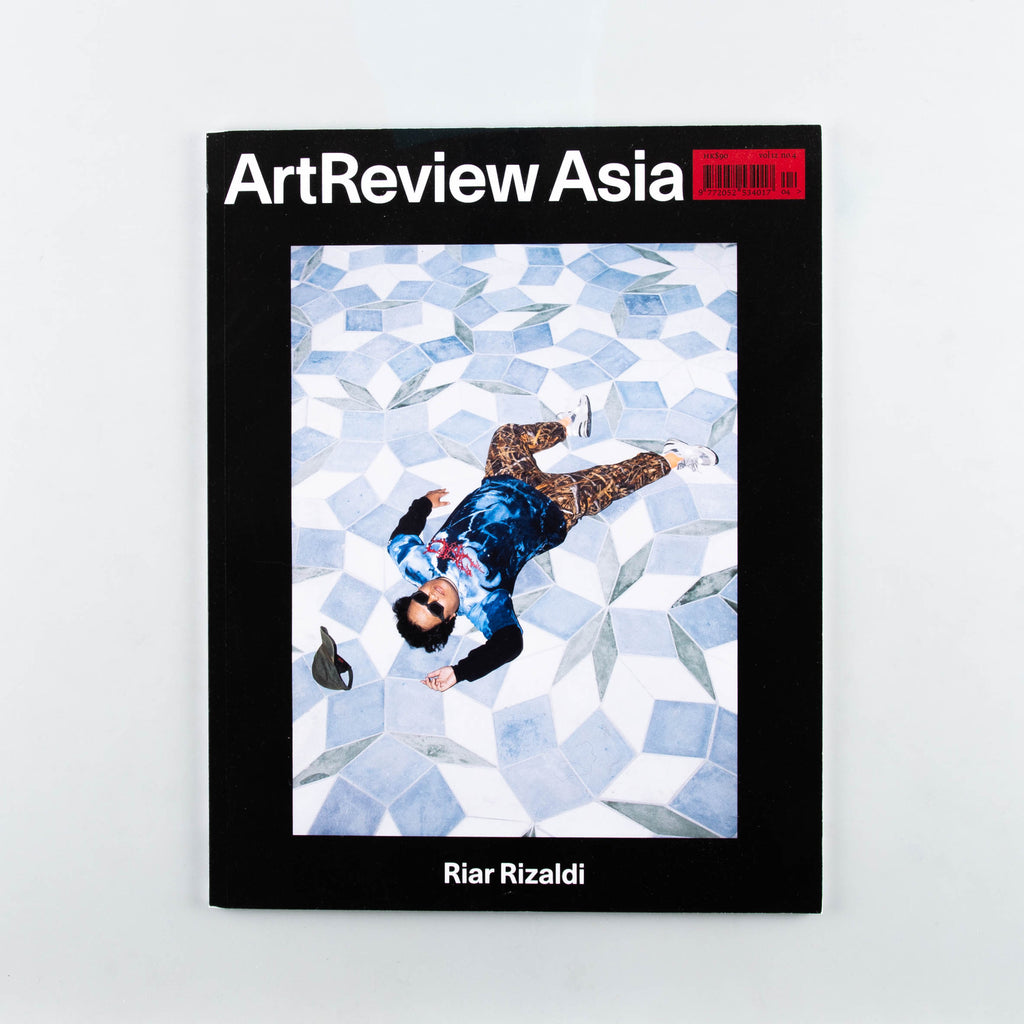
Art Review Asia Vol. 12 No. 4
£5.95
ArtReview Asia’s Winter issue features Indonesian artist and filmmaker Riar Rizaldi on the cover – and Stephanie Bailey dives into the quantum theories, mysticism and Indigenous folklore that inform his work. In his latest film, Mirage: Eigenstate (2024), a cosmonaut crashes into ‘quantum immortality’ – escaping death by existing across... Read More
ArtReview Asia’s Winter issue features Indonesian artist and filmmaker Riar Rizaldi on the cover – and Stephanie Bailey dives into the quantum theories, mysticism and Indigenous folklore that inform his work. In his latest film, Mirage: Eigenstate (2024), a cosmonaut crashes into ‘quantum immortality’ – escaping death by existing across several ‘non-interacting realities or timelines’. The theory reflects the many-worlds view of Indigenous animist beliefs in Indonesia, which sees the ‘material world as a site of inherent pluralism’. “My work is about the complexity of different worldviews existing at the same time,” Rizaldi tells Bailey, “Especially as it happens in Indonesia, where every island has its own ideas and unifying these many-worlds interpretations is almost impossible.”
Tyler Coburn finds that Kazakh artist Saule Suleimenova’s mixed-media works address her home country’s history of patriarchy and authoritarianism by countering these with intimate images of family history and demonstrators. Returning again and again to the archival photograph, Suleimenova attempts to picture women, as well as others marginalised by patriarchal regimes, into history. ‘Since 2018, Suleimenova has been at work on Residual Memory, a series that explores how “a common history is also a family history”: the trauma of colonisation and the struggle for self-determination are both felt within and across generations,’ writes Coburn.
Max Crosbie-Jones reflects on the displaced Myanmar artists who are rebuilding their communities in Thailand. ‘The 1 February 2021 coup in Myanmar created a new generation of fugitive political activists – among them artists, filmmakers, musicians and creative workers,’ writes Crosbie-Jones. This prompted ‘a calculated sense of curatorial care’ that has underpinned numerous exhibitions since – including anonymising artists or showing their work under pseudonyms, and even recording live talks that could later be edited to remove statements that might land Myanmar artists in trouble. But, as Crosbie-Jones finds, the nature of the art that’s being produced has changed over the last few years, too. ‘The protest motifs and slogans widely exhibited in the wake of the 2021 coup have made way for more nuanced, biographical and honest works that tap into personal perspectives, diasporic journeys and emotional responses of the displaced.’
Elsewhere in this issue: Sim Raejung’s artist project – a series of comic strips – offers a wry sketch of the human condition; American artist Mark Bradford speaks to Mark Rappolt about the community engagement and outreach programmes that have long been a part of his practice; Ilaria Maria Sala takes a look at Hong Kong’s art scene; ArtReview Asia highlights exhibitions to see this winter; plus exhibition reviews and book reviews from around the world, including the 15th Gwangju Biennale, Busan Biennale, Satoshi Kawata in Kyoto, Jen Liu in Hong Kong and Black Box in Singapore.
Art Review Founded in 1949, ArtReview is one of the world’s leading international contemporary art magazines, dedicated to expanding contemporary art’s audience and reach.